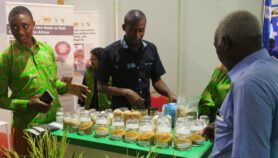By: Li Fangchao
Send to a friend
The details you provide on this page will not be used to send unsolicited email, and will not be sold to a 3rd party. See privacy policy.
[HARBIN] Chinese researchers say they have invented a cheap and eco-friendly way to keep city-dwellers warm in winter and cool in summer — using untreated sewage.
Their device extracts heat from raw sewage that has been temporarily diverted on its way to the processing plant. It can also make air conditioning units run more efficiently, and absorb the heat they remove from buildings.
The device can reduce the cost of heating and air conditioning systems by 20 per cent, says lead researcher Sun Dexing, a professor in the environmental science department at Harbin Institute of Technology. It is also environmentally friendly as it produces no pollution and uses no chemicals.
“The device could replace traditional energy sources, such as coal, to provide air conditioning and heating for buildings,” says Sun, adding that it could be used wherever there is enough sewage, such as in hotels, apartment complexes and shopping plazas.
In fact, it has already been successfully tested in a hotel and shopping centre in Harbin, a city in the Heilongjiang Province, northeast China, which is very cold in winter.
Sun’s invention works in conjunction with the standard ‘heat pump’ system used in air conditioning units.
By creating a series of filters to retain the solid waste, which would otherwise block the pipes, the device leaves the liquid component free to enter the pump and transfer its heat to a coil filled with Freon — the trade name for a gas used as a refrigerant.
The liquid sewage then returns to the device to carry the solid waste away to the processing plant. The Freon, meanwhile, is compressed to further warm it, and diverted to a condenser, which heats a water-filled coil. A fan blows the heated air around the coil into the room.
This process is powered by electricity, but the added heat from sewage makes it four times more energy efficient, says Sun.
He says that even in extremely cold areas, the temperature of sewage in the urban area is still around ten degrees Celsius. But the temperature in the heat pump is only about three degrees Celsius, meaning that the sewage can transfer much of its heat to the Freon.
In summer months, the process works in reverse. Heat from the air is transmitted through the coil and back to the condenser then onto the liquid portion of the sewage.
By carrying the heat away in sewage on its way to be processed, the device could help relieve the ‘urban heat island effect’ in overcrowded cities of Southern China, such as Shanghai, says Sun.
Other countries have used sewage as an energy source, but according to Sun, they all use waste that has already passed through a processing plant, which is less practical and more expensive than the raw sewage he uses.
The device has been patented and will be commercialised by a company set up by the Harbin Institute of Technology.
“The device has huge social and economic benefits,” says Jiang Yi, an expert on heating and air conditioning from the Chinese Academy of Engineering.












